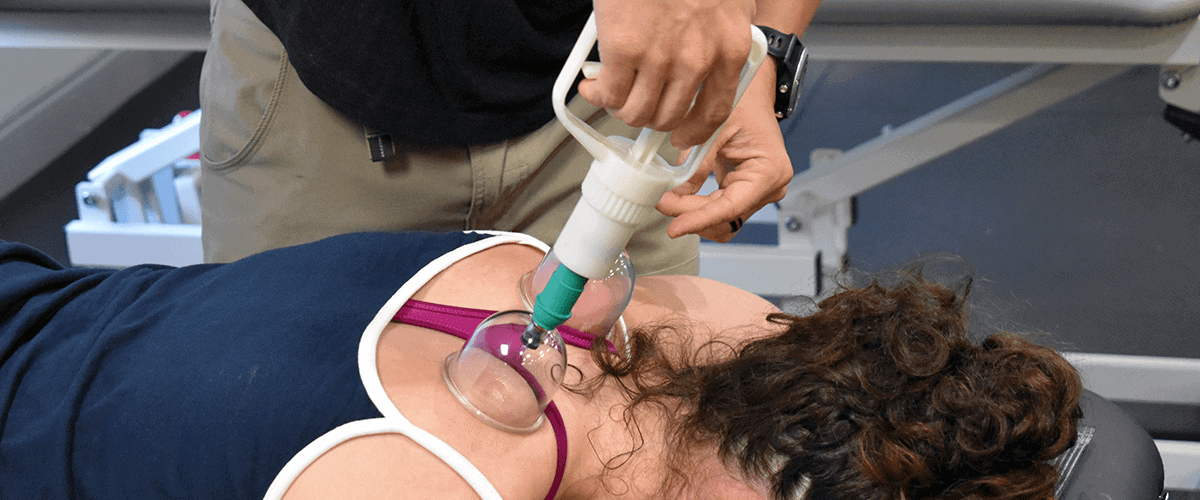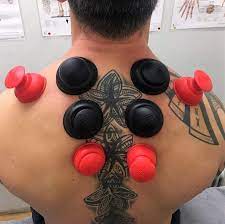
Myofascial cupping/decompression technique
Cupping therapy may be the in thing now, but it’s not anything new.
It was used by the ancient Middle Eastern, Chinese and Egyptian cultures. Cupping is actually an ancient form of alternative medicine where cups are put on the skin to create suction. In a way, these cultures were ahead of their time. Today, it’s used to help with relaxation, blood flow, pain and inflammation. Some think of it as a deep-tissue massage.
How Cupping Therapy Is Done
One of our Physical Therapists will place the cup upside down on your skin. A rubber pump may be used to to create a vacuum thus causing the skin to rise and the blood vessels to expand. This helps to free up the underlying tissue or fascia that can often lead to restrictions which cause limitations in our mobility-and often are the source of our imbalances and pain associated with it. Cupping also helps promote blood flow to the area to allow it to heal faster.
Impact Therapists will utilize both vacuum pump cups and silicone cups based on the most appropriate cup for your specific needs.


Why is Cupping Done?
Physical therapists may sometimes use cupping as a technique of tissue distraction release. The cups are glided across different areas to lift and separate tissue. It enhances the release of the interfaces between the neural tissues, fascia, skin, ligaments, muscles and tendons. Some patients with myofascial pain report resolution of pain after just one session. There is also some evidence to suggest that cupping techniques are effective for chronic neck pain, low back pain and fibromyalgia.
The three cupping techniques are longitudinal, cross fiber and circular. The longitudinal technique is the most common, and the cup is glided longitudinally across the muscle fibers. The cross fiber technique is used when it is believed that the tissue is scarred. The circular technique is used at the end of the session to ensure that all areas were covered.
Cupping therapy is popular among athletes. Numerous athletes from the Olympics in Rio 2016 used cupping. An athlete patient with over a year history of iliotibial band (ITB) pain reported instant relief following a three minute session of cupping. The technique was repeated a week later. Following only two cupping sessions, he was symptom free and returned to his usual running. What can we learn? Cupping therapy may potentially be more effective than techniques that focus on further compressing down on soft-tissues that are hypothesized to be tight.
There’s real science behind cupping therapy. By creating suction with negative pressure, it can increase hydration and blood to body tissues, ease up adhesions, rid excess fluids and eliminate connective tissues. It’s a versatile treatment and can be modified from deep tissue release to lymphatic drainage.
Cupping should not be performed on skin sites with wounds, infection, or burns. It is not uncommon to create bruises on the skin that can last up to two weeks. Bruises typically resolve themselves with time.
Other Benefits of Cupping...
Common Conditions Treated with Cupping:
